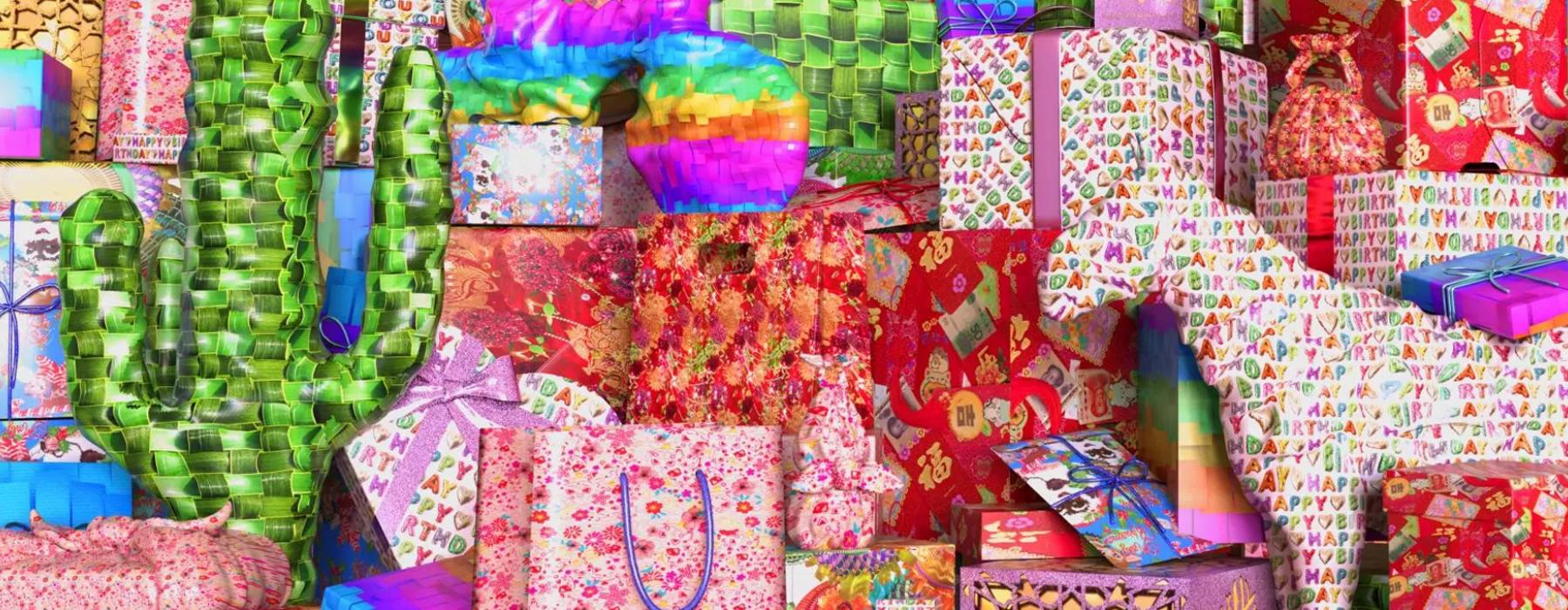
1. Guanyin, goddess of compassion
Guanyin is the Buddhist goddess of compassion (being kind to people when they have problems).
Guanyin also protects people at sea. In the late 1970s, like many other people in South Vietnam, Ms
Minh Tam had to leave her country because there was a war. Lots of people left on boats, and many
of them died on the way. Ms Minh Tam was thankful to Guanyin that she got to the Netherlands
safely, and so she donated a statue of the goddess to Museum Volkenkunde.
Vietnam; 1982; plaster, metal, paint; donation of Ms A. Minh Tam, 1982; RV-5208-1a, b
2. Clothes for the gods
In Bali religious people give clothes to the gods. Clothes for the bottom half of the body are at the
bottom of the pile, and clothes for the top half are on top of them. This is a clothes offering for a
female god, which you can see from the gold flowers for her hair. The gods give back wealth and
protection for a long life.
Bali, Indonesia; 1983-1990; cotton, gold paint, wood, steel, wool, lontar leaf; TM-5572-9a, b, c, RV5258-133t
3. Gift for the gods
Japanese parents take their baby to a Shintō shrine when it is one month old. At this holy place they
ask the gods to protect their child. They often bring something good to eat or rice wine as a gift. The
servant at the gate in this old image has brought the offering wrapped in a pretty green cloth.
Ishizaki Yūshi (1768-1846); Japan; 1824; silk, ink, pigments; RV-1-4481-2 (reproduction)
4. Our daily bread
These are a few lines from the Lord’s Prayer, the most famous Christian prayer. In this prayer, Christians tell God that they realise he is powerful, and they also ask for something in return: enough food to eat, and forgiveness.
Suriname; 1900-1960; glass, wood; TM-3146-4 (paper is a reproduction)
5. Thank goodness for you
In 1940 Miguel Reyes fell twelve metres out of a tree. But he survived! Of course he was very
thankful, so he made this little painting for the Holy Virgin of San Juan to thank her for saving his life.
Look, she appears just as he is falling out of the tree.
Jalisco, Mexico; 1940; steel, tin, pigments; TM-4658-7
6. Make me better
When their prayers have been answered, people often give presents to the gods to thank them. This
has been happening for hundreds of years. Presents like this are called ‘votive offerings’, and there
are lots of examples all over the world. Often they are figures shaped like parts of the body which
had something wrong with it. People placed them next to a statue of a god to ask for a cure, or to
thank them if they had got better.
6A Pendants: Oaxaca, Mexico; 1950-1990; silver; RV-5715-441
6B Foot: Laxmi; Mandvi, India; 1950-1980; terracotta; TM-4665-157
6C Eye and ear: Dahyabhai Haribhai; Valod, India; 1950-1980; terracotta; TM-4665-211, -212
6D Teeth: Netherlands; 1800-1900; wax; on loan from Museum Catharijneconvent, Utrecht, ABM v121
6E Pregnant belly: Belgium; 1890-1910; silver; on loan from Museum Catharijneconvent, Utrecht, ABM v236f
6F Lungs: Den Bosch, Netherlands; 1890-1910; silver; on loan from Museum Catharijneconvent, Utrecht, RMCC m26a
Getting better
Look at these figures. What parts of the body can you see? Why were they given as presents?
7. My greatest wish
If you have a wish, you can give a small figurine as a ‘votive offering’ to the gods. Or you can give one after a wish has come true. The little figurine is a boy, and it was given by a woman who wanted to become a mother. The bigger one is the goddess Mariamman. She protects people from illness and she can make them better. Religious people gave figures like this because they did not want to get measles or chickenpox.
7A China; 1850-1950; glazed stoneware; RV-3531-2
7B Madurai, India; around 1900; earthenware; WM-18713